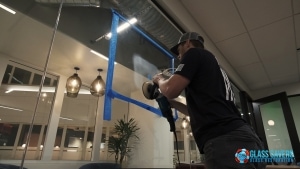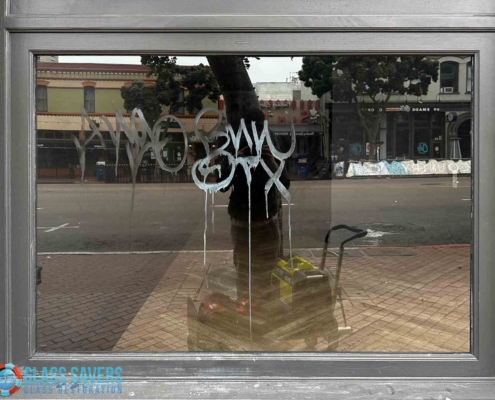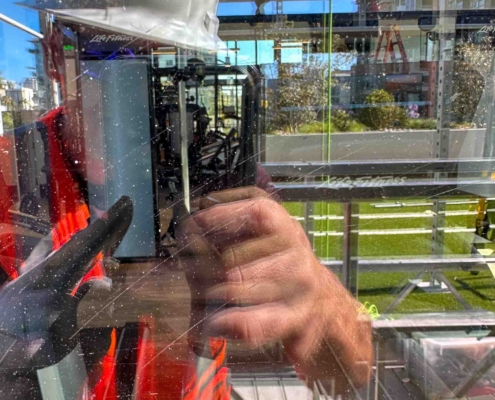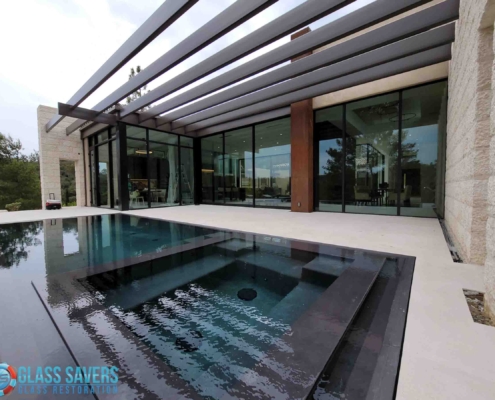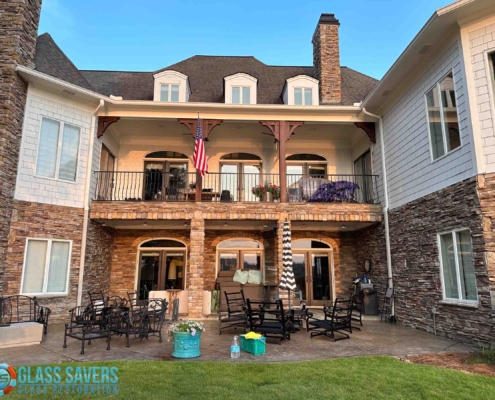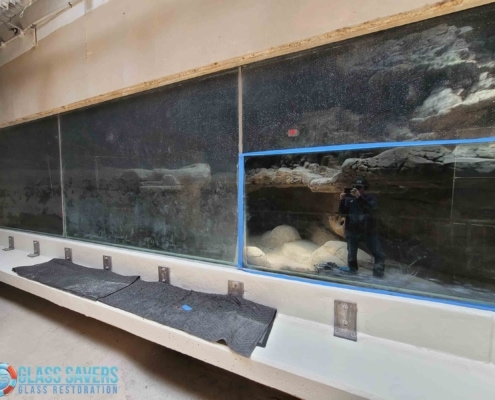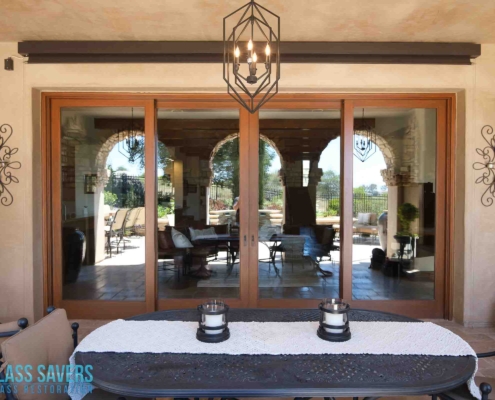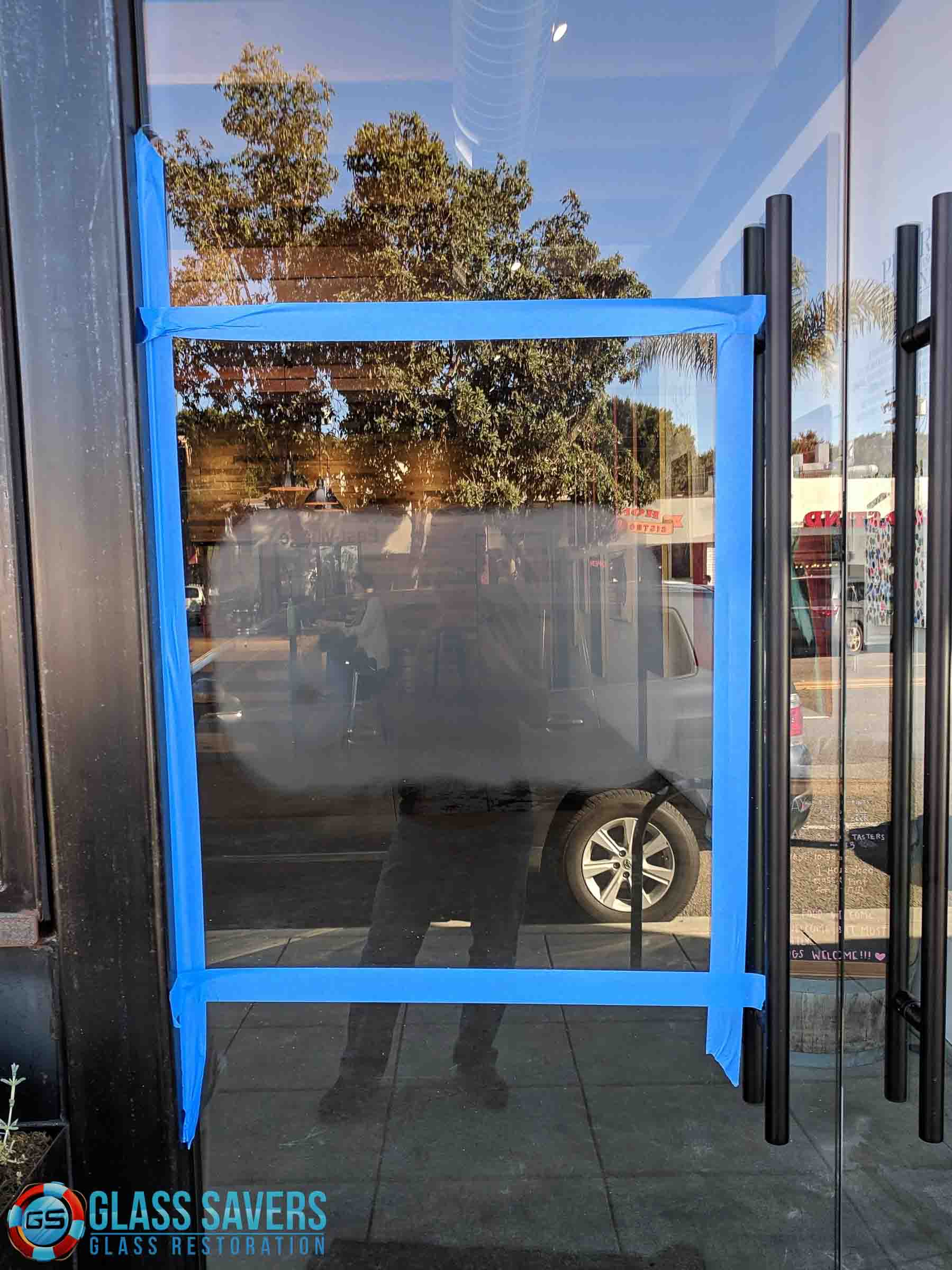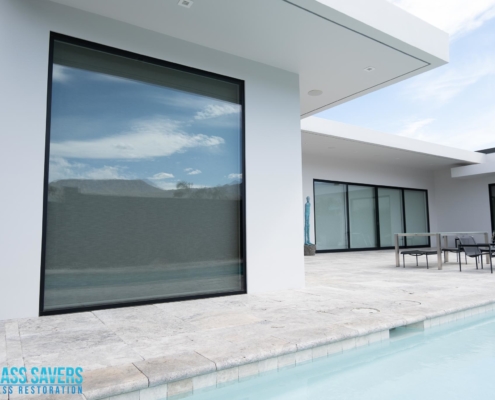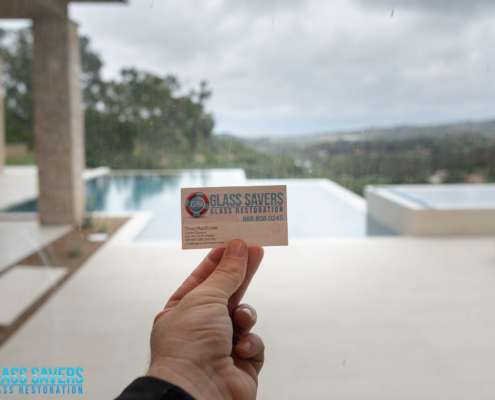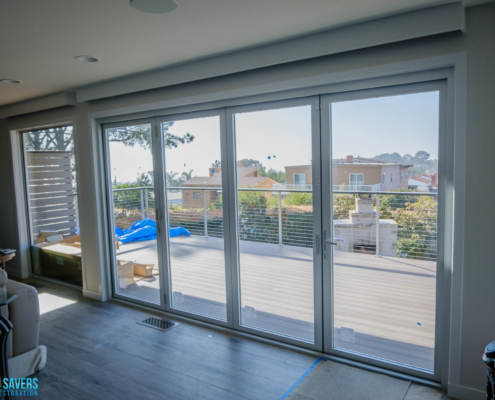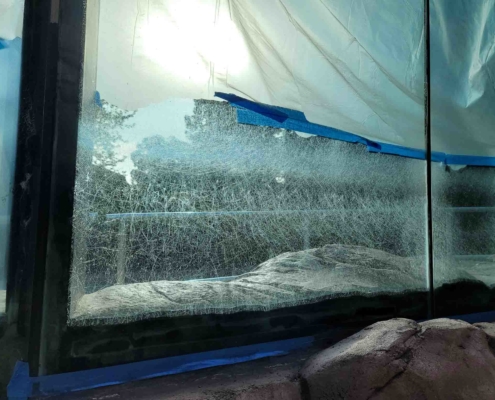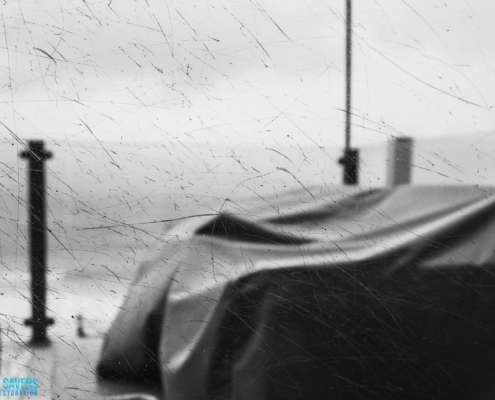Glass Restoration vs. Replacement
When faced with damaged glass, the decision between restoration and replacement carries ecological and cost implications.
Ecological Impact:
Restoration:
- – Reduced Waste: Restoring glass minimizes waste by refurbishing existing panes.
- – Lower Energy Use: Restoration consumes less energy compared to manufacturing new glass.
- – Smaller Carbon Footprint: It generally results in a smaller carbon footprint due to reduced transportation needs.
Replacement:
- Resource Intensive: Producing new glass consumes significant resources.
- High Energy Demand: Glass production requires substantial energy inputs.
- Transportation Impact: The transportation of new glass adds to the carbon footprint.
Cost Considerations:
Restoration:
- Cost-Effective: Restoration is often budget-friendly, saving on new glass purchase and installation.
- Lower Labor Costs: It typically requires fewer labor hours.
Replacement:
- Higher Initial Costs: Purchasing new glass and installation can be considerably more expensive.
- Additional Labor Costs: Replacing glass involves more labor, including disposal of old glass.
Conclusion:
Glass restoration is clearly the greener and cost-effective choice. It reduces waste, conserves resources, and minimizes carbon emissions. Additionally, it’s often friendlier on the wallet, making it an attractive option for those prioritizing sustainability and savings. The choice ultimately depends on the extent of damage, budget, and personal preferences.
![]()
![]()

